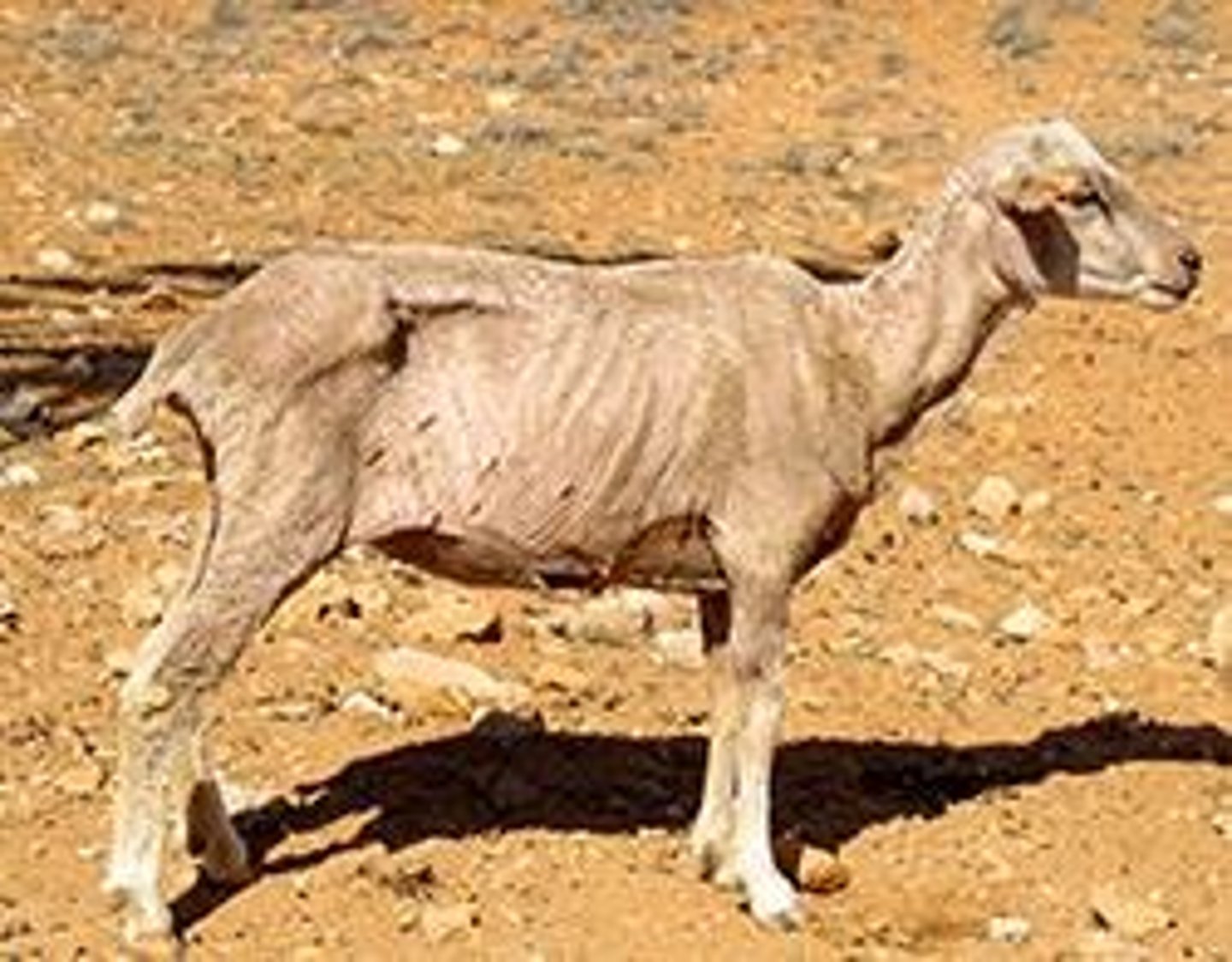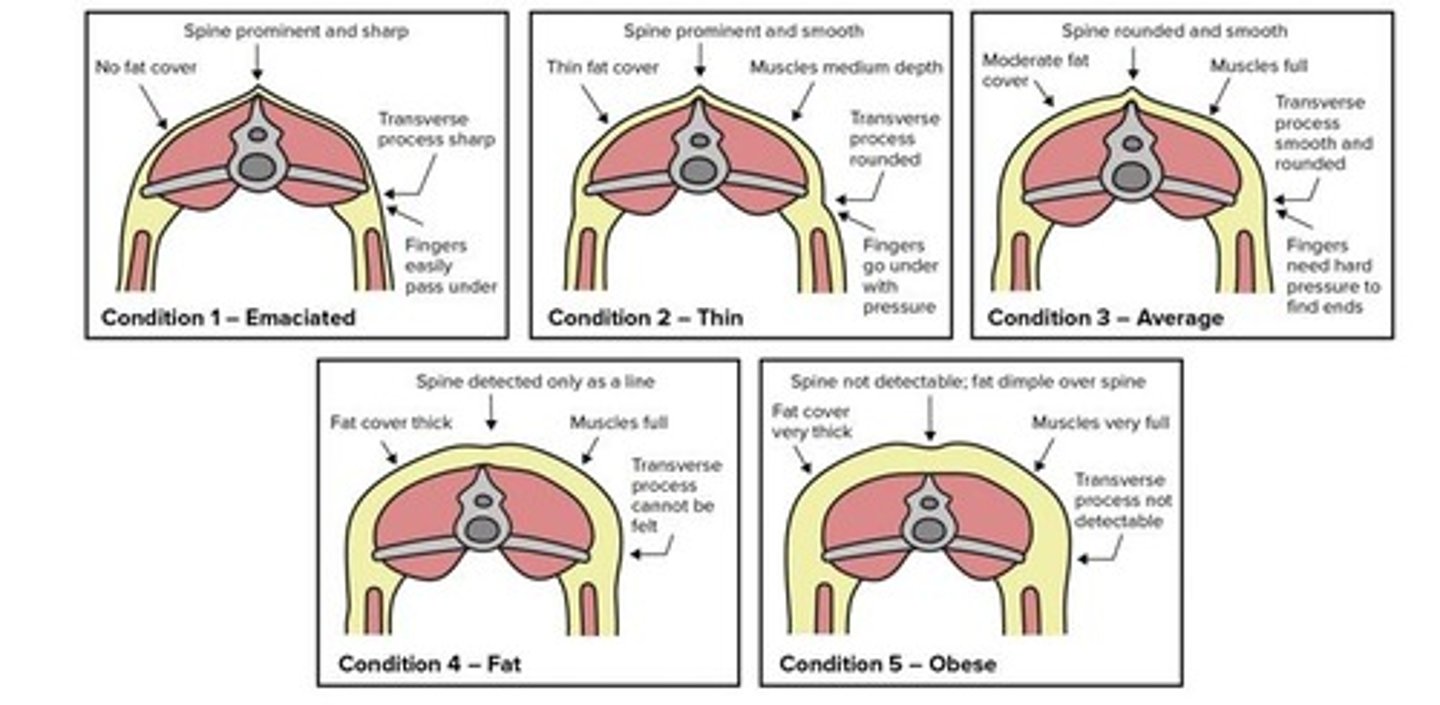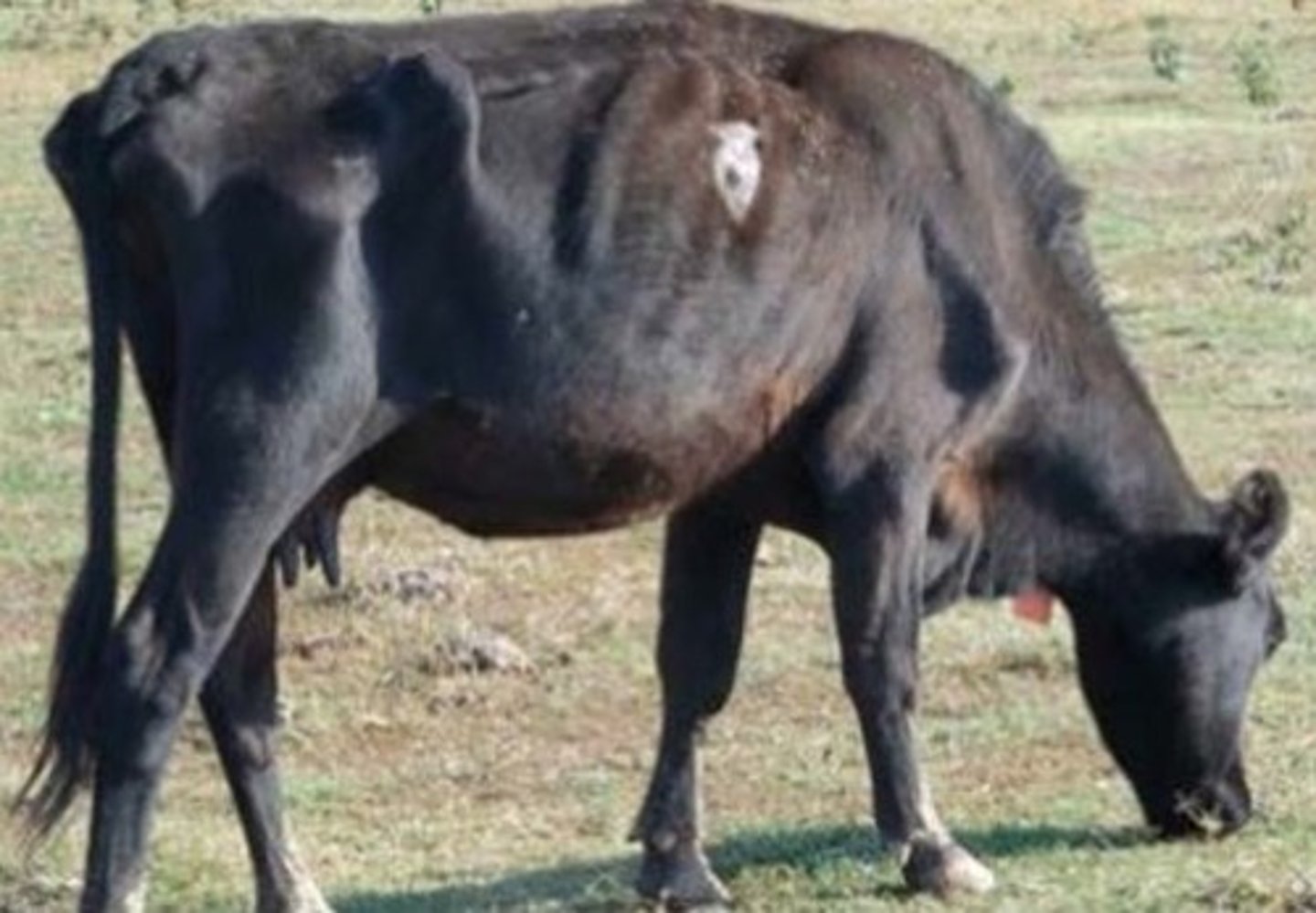Body Condition Scoring in Sheep, Goats, and Cattle: Methods, Scales, and Ideal Ranges
1/26
There's no tags or description
Looks like no tags are added yet.
Name | Mastery | Learn | Test | Matching | Spaced |
|---|
No study sessions yet.
27 Terms
Body Condition Score (BCS)
A subjective assessment of the amount of fat and muscle cover on an animal's body.
BCS Scale goats
Scale is 1-5 with 0.5 increments, where 1 = too thin and 5 = too fat.
BCS 1 Goats
Emaciated. No fat cover. Both spinous and transverse processes are sharp and are easily felt.

BCS 2 Goats
Thin. Some fat cover. Both spinous and transverse processes are sharp and can be felt with a little pressure.
BCS 3 Goats
Average. Moderate fat cover. Both spinous and transverse processes are smooth and rounded and takes hard pressure to feel.
BCS 4 Goats
Fat. Thick fat cover. Spinous process can be felt with hard pressure and transverse process cannot be felt.
BCS 5 Goats
Obese. Very thick fat cover. Both spinous process and transverse process cannot be felt. Fat dimple can be detected over spine.

Factors that affect BCS
Nutrition, production stage, age, sex, and specific conditions like pre-breeding, early gestation, mid gestation, late gestation, lactating, and weaning.
Ideal BCS pre breeding
3-4 females, 4 males
Ideal BCS for Singles at Lambing
3-3.5.
Ideal BCS for Twins at Lambing
3.5-4.
Ideal BCS for Lactating
2.5+ with peak around 4 weeks post giving birth.
Low BCS may indicate?
May indicate problems such as infection/disease, injury, parasites, or nutritional deficiencies.
Nutrition for Low BCS
Increase protein (protein block/tub or high protein pellets/cubes >12% CP) and energy (carbohydrates like corn, oats, pelleted feed, grains).
BCS in Beef Cattle Scale
Scale goes from 1-9, with 1 being severely emaciated and 9 being extremely obese.
BCS 1 in Beef Cattle
Severely emaciated and physically weak with all ribs and bone structure easily visible.

BCS 2 in Beef Cattle
Emaciated. Muscle tissue seems severely depleted through the hindquarters and shoulder.
BCS 3 in Beef Cattle
Very thin with no fat on ribs or in brisket and the backbone is easily visible.
BCS 4 in Beef Cattle
Thin, with ribs visible and the backbone showing. The spinous processes are still very sharp and barely visible individually.
BCS 5 in Beef Cattle
Moderate. The spinous processes are smooth and difficult to identify, as are ribs.
BCS 6 in Beef Cattle
High moderate. Good smooth appearance throughout. The back appears rounded and ribs are not visible.
BCS 7 in Beef Cattle
Very good flesh. Tail head shows pockets of fat, and the back appears square due to fat. Ribs are not visible.
BCS 8 in Beef Cattle
Obese. Neck is thick and short and her back appears very square due to excessive fat.
BCS 9 in Beef Cattle
Extremely obese. May have problems with mobility due to excessive weight and restriction of limbs.
BCS for weaning
2+
Why is it harder for older animals to maintain BCS?
Competition
What does castration benefit in BCS?
Makes it easier to maintain a high BCS